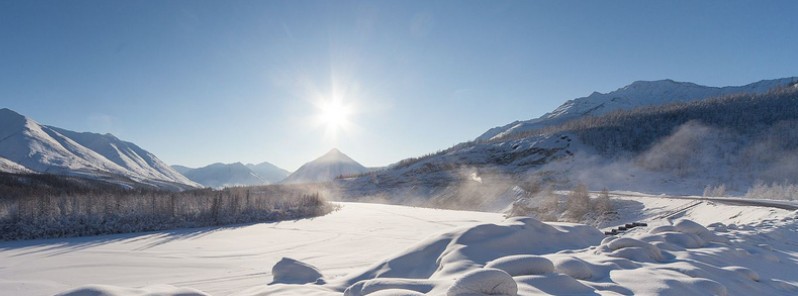Winter cold extremes linked to high-altitude polar vortex weakening

Over the last decades, the stratospheric polar vortex has shifted towards more frequent weak states which can explain Eurasian cooling trends in boreal winter in the era of Arctic amplification.
When the strong winds that circle the Arctic slacken, cold polar air can escape and cause extreme winter chills in parts of the Northern hemisphere. A new study finds that these weak states have become more persistent over the past four decades and can be linked to cold winters in Russia and Europe.
This is the first to show that changes in winds high up in the stratosphere substantially contributed to the observed winter cooling trend in northern Eurasia. While it is still a subject of research how the Arctic under climate change impacts the rest of the world, this study lends further support that a changing Arctic impacts the weather across large swaths of the Northern Hemisphere population centers.
"In winter, the freezing Arctic air is normally ‘locked’ by strong circumpolar winds several tens of kilometers high in the atmosphere, known as the stratospheric polar vortex, so that the cold air is confined near the pole," says Marlene Kretschmer from PIK, lead-author of the study to be published in the Bulletin of the American Meteorological Society.
"We found that there’s a shift towards more-persistent weak states of the polar vortex," she said. "This allows frigid air to break out of the Arctic and threaten Russia and Europe with cold extremes. In fact, this can explain most of the observed cooling of Eurasian winters since 1990."
Winters in the Northeastern US, Europe and especially Asia were recently anomalously cold and some regions like Western Siberia show a downward temperature trend in winter. In stark contrast, the Arctic has been warming rapidly.
Paradoxically, both phenomena are likely linked: When sea-ice North of Scandinavia and Russia melts, the uncovered ocean releases more warmth into the atmosphere and this can impact the atmosphere up to about 30 km (18.64 miles) in the stratosphere disturbing the polar vortex. Weak states of the high-altitude wind circling the Arctic then favors the occurrence of cold spells in the mid-latitudes. Previous work by Kretschmer and colleagues identified this causal pathway in observational data and it is further supported by several climate computer simulation studies.
"Our latest findings not only confirm the link between a weak polar vortex and severe winter weather, but also calculated how much of the observed cooling in regions like Russia and Scandinavia is linked to the weakening vortex. It turns out to be most," says co-author Judah Cohen from Atmospheric and Environmental Research/Massachusetts Institute of Technology (US).
Reference:
"More-Persistent Weak Stratospheric Polar Vortex States Linked to Cold Extremes" – Marlene Kretschmer, Dim Coumou, Laurie Agel, Mathew Barlow, Eli Tziperman, and Judah Cohen – AMS – https://doi.org/10.1175/BAMS-D-16-0259.1 – OPEN ACCESS
Featured image credit: Verkhoyansk Mountains, Shaka Republik, Yakutia, Russia. Credit: Maarten Takens

Commenting rules and guidelines
We value the thoughts and opinions of our readers and welcome healthy discussions on our website. In order to maintain a respectful and positive community, we ask that all commenters follow these rules.